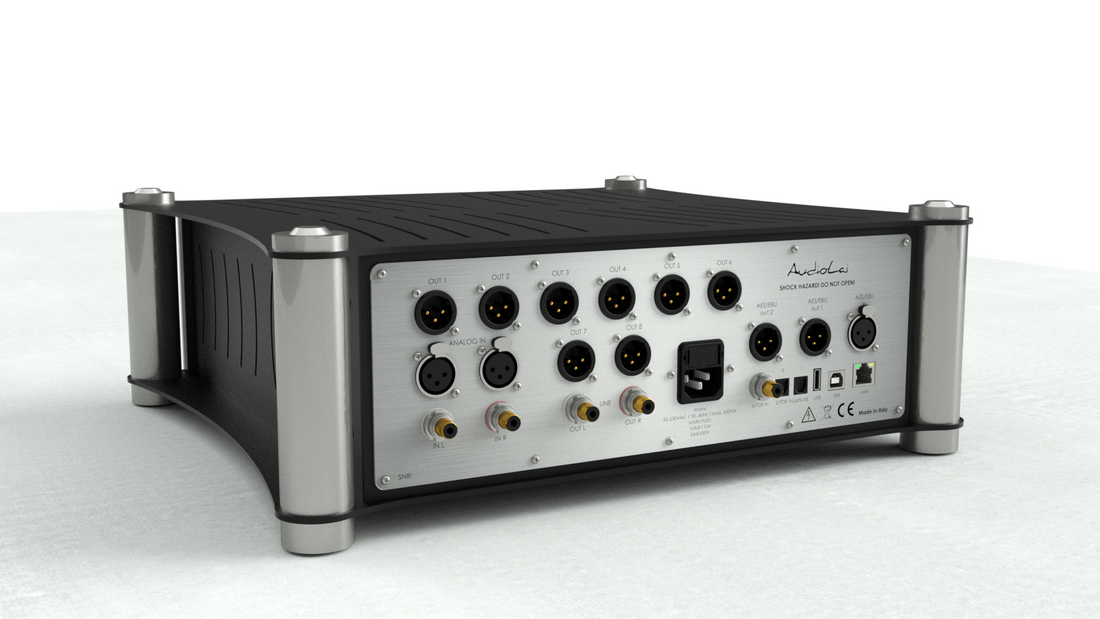
Digital Crossover
Share
Introduction
Digital crossovers represent one of the main strengths of the proposed system. This article examines different types of crossovers passive, active, and digital and highlights the advantages offered by DSP technology, making them ideal for both DIY projects and professional systems.
1. Passive Crossovers
Passive crossovers use only electrical components (resistors, inductors, and capacitors) to split the signal from the amplifier into frequency bands dedicated to each driver (woofer, midrange, tweeter). The term "passive" indicates that these circuits do not require an external power supply and do not actively control the current flow.
A typical configuration includes:
- Volume Control: Managed by the preamplifier.
- Crossover Placement: Located inside the speaker cabinet.
- A two-way, second-order crossover that provides gradual cutoff slopes; steeper slopes require additional components.
In more complex speakers (three- or four-way systems), the number of components increases accordingly.
2. Active Crossovers
Unlike passive crossovers, active crossovers divide the frequency band at the line level and are placed between the preamplifier and the power amplifiers. In this setup:
- Each Driver has its own dedicated amplification channel, improving control (damping factor) over the driver.
- A capacitor in series with the tweeter protects it from low-frequency transients or DC components, especially during power-on or power-off.
- Eliminating bulky passive components results in cost and space savings, which is particularly advantageous for three- or four-way systems.
3. Digital Crossovers and DSP Technology
Until recently, active crossovers were implemented using analog circuits based on operational amplifiers, with the limitation that each filter required a specific hardware implementation. With the advent of DSP (Digital Signal Processing) technology, it is now possible to:
- Implement active crossovers entirely in digital form, allowing for modifications and updates to the audio processing without any hardware changes.
- Handle direct digital inputs (from a computer or streamer) while still supporting analog inputs.
- Manage volume control digitally, either at the source or within the crossover itself.
A typical digital system diagram illustrates how integrated volume control and flexible configuration can significantly simplify the overall system architecture.
4. DSP Advantages
Digital crossovers based on DSP offer numerous benefits thanks to advanced features and intuitive user interfaces:
- Flexibility: They can be adapted for systems ranging from simple 2-way setups to complex 4–5-way configurations.
- Parametric Equalization: Allows for correcting the driver response, adapting to room acoustics, and customizing the overall system performance.
- Advanced Biquad Programming: Provides virtually unlimited possibilities for fine-tuning the system’s response.
- Delay and Time Alignment: Ensures a smooth transition across the crossover region, enhancing driver integration.
Various online tutorials and guides explore topics such as crossover design and equalization techniques, offering valuable support for both beginners and professionals.
5. Requirements and Additional Components
In addition to the active/digital crossover, a complete system requires:
- Speaker Drivers: You can either build a set from scratch or convert an existing speaker by removing its passive crossover.
- Adequate Amplification: Each driver requires a dedicated amplification channel, which can be achieved through dedicated amplifiers or multi-channel solutions.
- Measurement Tools: For optimal performance, accurate acoustic measurements are essential. Free software (such as Room EQ Wizard) combined with a suitable measurement microphone is highly recommended.
Conclusion
Adopting digital crossovers with DSP technology offers significant advantages in terms of flexibility, precision, and ease of integration. By enabling dynamic adjustments to the audio processing without hardware modifications, this technology is an excellent choice for modern speaker systems in both professional applications and DIY projects.
